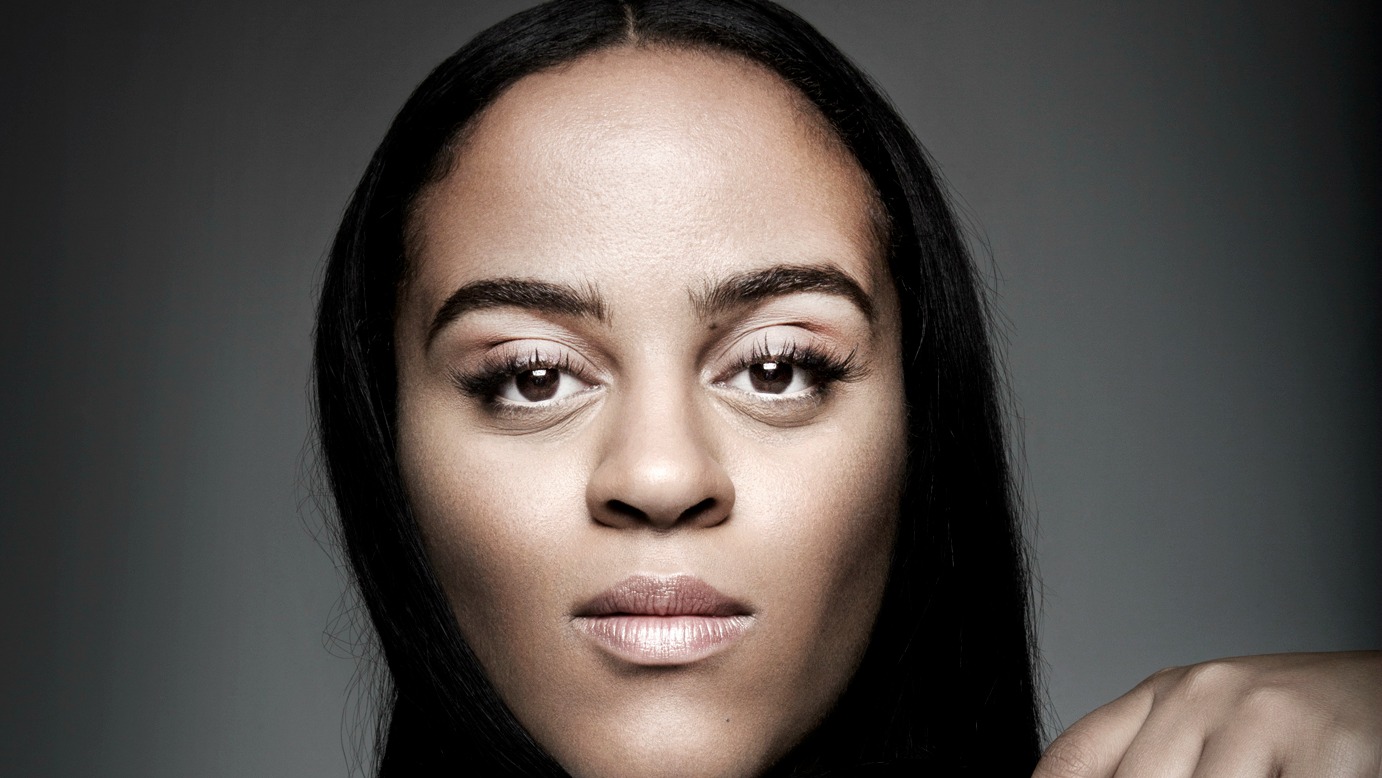BACKSTORY: With torrents of Internet buzz at her back, Seinabo Sey has been sailing to every port on the planet, performing her hybridized take on soul
FROM: Born in Stockholm, moved to Gambia at age three, returned to Sweden—Halmstad, this time—at age seven, then back to Stockholm at age fifteen
YOU MIGHT KNOW HER FROM: Her first single, “Younger,” which has a stupefying 70 million streams on Spotify and well over 2 million views on YouTube
NOW: Riding high on the release of Pretend, her powerful debut LP
If contemporary pop music is a cross-cultural, border-melting stew, twenty-four-year-old Seinabo Sey—progeny of a West African music star and a Swedish mother—might be the froth bubbling on its surface.
But instead of asking, “Who is Seinabo Sey?” it’s more useful to ask, “Where is Seinabo Sey?” because the answers to that question will be just as fruitful.
Take right now, for example: The wanderer is in a taxi, heading home from the airport after performing as part of “Stockholm Night” in Barcelona’s La Mercé festival, an annual event that invites another city to share its cultural riches in Spain.
An English translation of Sey’s biography on the festival’s website provides an amusingly clumsy yet poignant summation of the singer: “‘Younger,’ in which her soul voice, powerful and fleshy, reminded us that time passes and you have to take it. A prayer gospel hymn with electronic touches that became epic potential for the club.”
It’s on the strength of that mammoth single that Sey—whose music sounds like a light version of Miike Snow, but with female vocals—has catapulted from obscurity to Next Big Thing. Along the way, she has captivated young music lovers curious to see what new pop permutation will spring next out of the grand experiment that is genre cross-pollination.
Pinpointing Sey’s musical foundation is like trying to establish the exact longitude and latitude of ever-shifting tectonic plates. Leave it to be said, though, that she grew up in a music-infused household where her father, roots-pop musician Mawdo Sey, gleefully indoctrinated her with French opera, reggae, and Sufi music. His daughter was having none of it. “When we’d wake up, he’d have reggae music blasting all day, and I hated it,” she admits. “He tried to get me into Björk, and I didn’t get that either.”
“I remember feeling such a sense of accomplishment, and proud of what I did, because I had worked hard to overcome my fear.”
While she eventually came around to those artists, she initially glommed onto Beyoncé, Lauryn Hill, and Alicia Keys. It wasn’t just their voices that she liked, she also relished rebelling against her father (who, as a former devout Muslim turned raga devotee, was a certified rebel in his own right). Inevitably, of course, she wound up on the same path that Mawdo Sey had tread.
“I was bullied in my class, and when I was thirteen or fourteen, a teacher forced me to sing in class,” she recalls. “I remember feeling such a sense of accomplishment, and proud of what I did, because I had worked hard to overcome my fear.”
After staging her own small concerts for friends, Sey confronted her stage fright head-on by performing as a backup singer on a fifty-date tour with Swedish electronic-rap group Maskinen. “I performed so much that I stopped caring about being scared,” adds the singer, who is now signed to Virgin.
Less than five years later, the world is her oyster, as the saying goes, and Seinabo Sey has almost nothing to be afraid of. Well, other than writing songs, that is. “If I don’t finish a song right away, it takes forever, because I wind up mimicking myself and having a hard time tapping into the emotion I originally had,” she reveals. “That’s my trouble: I get stuck in overanalyzing. But mostly, I try to write songs that people can really relate to—feeling small, lonely, insecure. I try to be as honest as possible.” FL







